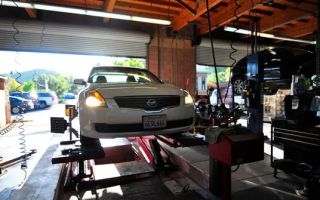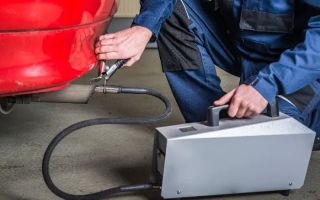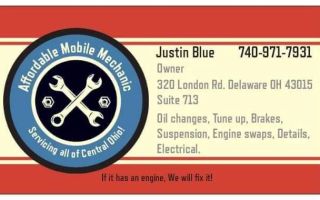How to Fix a Flat Tire on the Side of the Road: A Step-by-Step Guide for Car Owners
One of the most inconvenient things that can happen to a driver is getting a flat tire on the side of the road. Whether you’re on a long road trip or just commuting to work, a flat tire can throw off your whole day. But don’t panic! With the right tools and know-how, fixing a flat tire on the side of the road is something any car owner can handle. This article will guide you through the process step by step, ensuring you stay safe and get back on the road as quickly as possible.

MR. TIRE INC.
2078 New York Ave, Huntington Station, NY 11746, USA
1. Preparing for the Unexpected: What You Need to Fix a Flat Tire
Before you find yourself stranded with a flat tire, it's crucial to be prepared. Keeping a few essential tools and supplies in your car will save you time and frustration when a flat tire happens. Here’s what you need:
- Spare Tire: This is an obvious necessity. Ensure that your spare tire is properly inflated and in good condition.
- Jack: A reliable jack is essential to lift your car and remove the flat tire.
- Lug Wrench: This tool will allow you to remove the lug nuts holding the tire in place.
- Tire Pressure Gauge: Check the pressure of your spare tire before you start changing the flat to ensure it’s properly inflated.
- Wheel Wedges: To prevent your car from rolling while you’re working, use wheel wedges to stabilize it.
- Reflective Triangles or Flares: In case you’re on the side of a busy road, make sure to have reflective triangles or flares to alert other drivers.
Now that you have your equipment ready, let’s dive into the process of fixing a flat tire on the side of the road.

MR. TIRE INC.
2078 New York Ave, Huntington Station, NY 11746, USA
2. Safety First: Securing the Area
Before you start working on your car, safety should be your number one priority. Follow these steps to ensure you're safe while you repair your flat tire:
- Pull Over to a Safe Spot: If you're driving when you realize you have a flat tire, find a safe location to pull over. Aim for a flat, stable surface, and avoid stopping on hills or curves. Turn on your hazard lights to alert other drivers.
- Apply the Parking Brake: Once you’ve stopped, engage the parking brake to prevent the car from moving.
- Use Reflective Triangles: Place reflective triangles or flares around your car to warn approaching vehicles and ensure your visibility.
Once you’ve taken these precautions, you can start changing your flat tire.
3. How to Change a Flat Tire Step-by-Step
With the area secured and safety ensured, you’re ready to change your flat tire. Follow these detailed steps to get your vehicle back on the road:
Step 1: Loosen the Lug Nuts
Before lifting the car, use the lug wrench to loosen the lug nuts on the flat tire. Turn the nuts counterclockwise, but don’t remove them completely—just break their resistance. If the nuts are too tight, you may need to apply extra pressure using your body weight.
Step 2: Lift the Car with the Jack
Place the jack under the vehicle’s jacking point, typically located near the tire you’re replacing. Slowly raise the jack until the flat tire is a few inches off the ground. Make sure the car is securely elevated before continuing to the next step.
Step 3: Remove the Flat Tire
Once the car is lifted, remove the loosened lug nuts completely. Keep them in a safe place as you’ll need them to secure the new tire. Then, pull the flat tire off the vehicle and set it aside.
Step 4: Mount the Spare Tire
Align the spare tire with the wheel bolts and slide it into place. Once the tire is positioned correctly, replace the lug nuts and tighten them by hand.
Step 5: Lower the Car and Tighten the Lug Nuts
Slowly lower the car back to the ground using the jack. Once the car is stable, use the lug wrench to tighten the lug nuts completely in a star pattern, ensuring they’re evenly secured.
Step 6: Check Tire Pressure
Before hitting the road, check the pressure of the spare tire to ensure it’s at the correct level. You don’t want to risk driving on a tire that’s not properly inflated.
4. Real-Life Example: A Customer's Emergency Roadside Tire Repair
Let’s take a moment to consider a real-life scenario. Jane, a driver from Ohio, was on her way to a business meeting when she suddenly noticed a flat tire. Stranded on the side of a busy highway, Jane remembered the advice she had read online and had all the necessary tools in her car. She carefully followed the steps outlined in this guide, ensuring her safety and successfully changing the tire. Although it took about 30 minutes, Jane felt confident knowing she could handle such emergencies herself.
This is just one of many stories where simple preparation and knowledge can save time and avoid the frustration of waiting for roadside assistance. In fact, many people call towing or roadside assistance services simply because they aren’t sure how to handle flat tires. But you don’t have to rely on others when you can fix the problem yourself!
5. When to Call Roadside Assistance
While fixing a flat tire on your own is often doable, there are situations where calling for professional roadside assistance is the better choice. If you’re on a busy highway or if your car is in a dangerous position, it’s best to let a professional handle the situation. Additionally, if you’re unsure of the condition of your spare tire or lack the proper tools, a roadside assistance service can help you safely get back on your way.
Many towing companies offer roadside assistance packages that include flat tire repair, jump-starting a dead battery, or even fuel delivery. If you don’t feel confident in fixing a flat yourself or you’re unable to do so due to time constraints or location, these services are just a phone call away.
6. How to Choose the Right Roadside Assistance Service
When selecting a roadside assistance provider, there are several factors to consider. Look for a service that offers:
- 24/7 Availability: Emergencies don’t happen during business hours, so choose a provider that operates around the clock.
- Reputation: Read customer reviews to ensure the service is reliable and has a history of prompt, professional service.
- Comprehensive Services: Ensure they offer a wide range of services, including flat tire repair, towing, and battery jump-starts.
- Affordable Pricing: Understand the cost of services upfront to avoid any surprises during an emergency.
When you’re prepared for the worst, you can handle unexpected situations like a flat tire with ease. Whether you fix it yourself or call for help, the key is knowing your options and taking the right steps to ensure your safety on the road.
7. Conclusion: Be Prepared for Flat Tires
Getting a flat tire doesn’t have to ruin your day. With the proper tools, knowledge, and preparation, you can handle the situation confidently. Remember, while it’s always a good idea to try fixing the flat yourself, there are times when professional roadside assistance is the better option. In such cases, consider signing up for a reliable roadside assistance service to help you get back on the road quickly and safely.
If you’re ready to ensure that you're never stranded again, explore the various roadside assistance packages we offer. Our services cover everything from tire repairs to towing, ensuring you’re always prepared for the unexpected. Call us today to learn more about how we can help you!


























